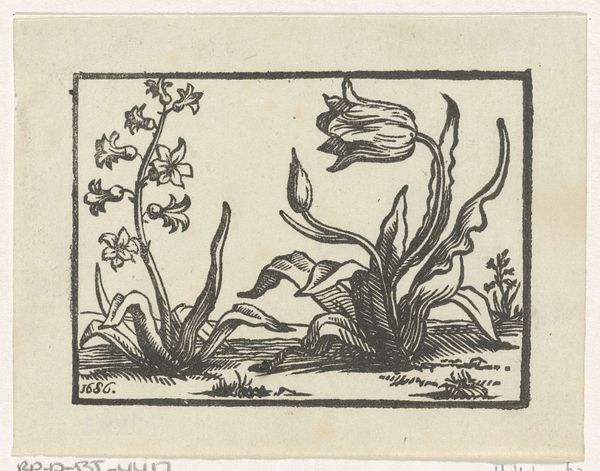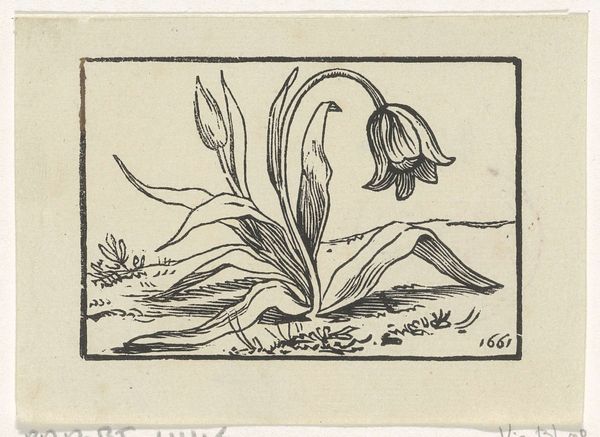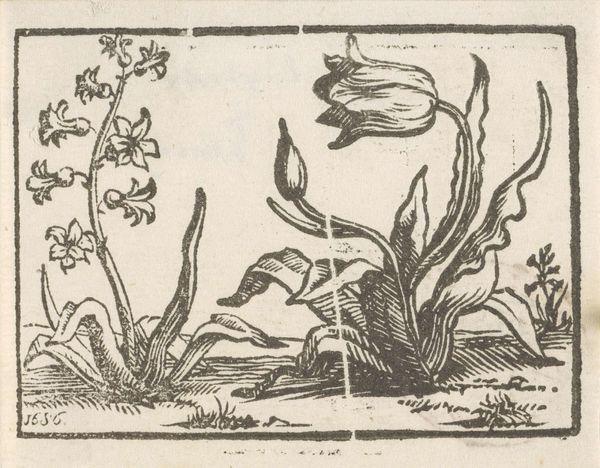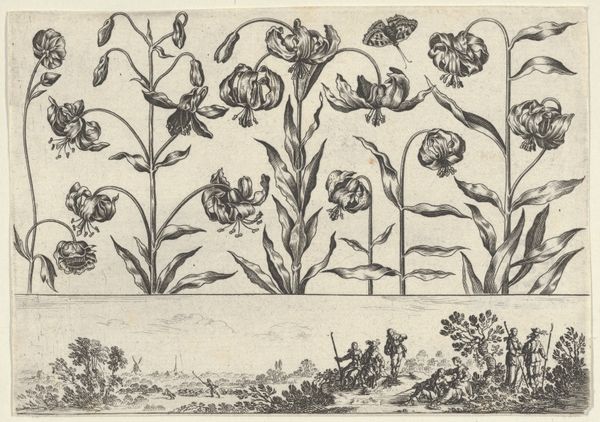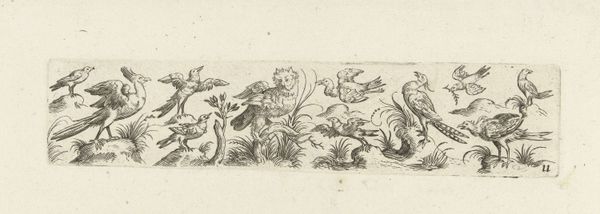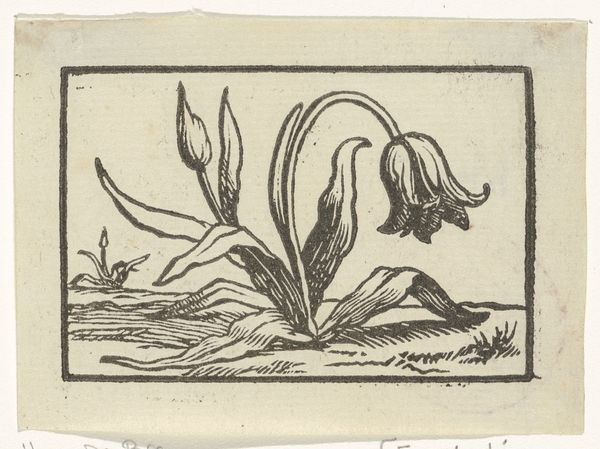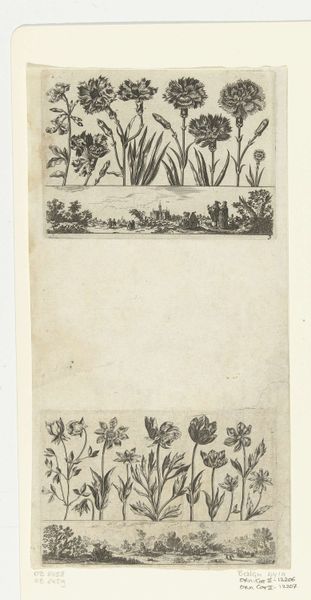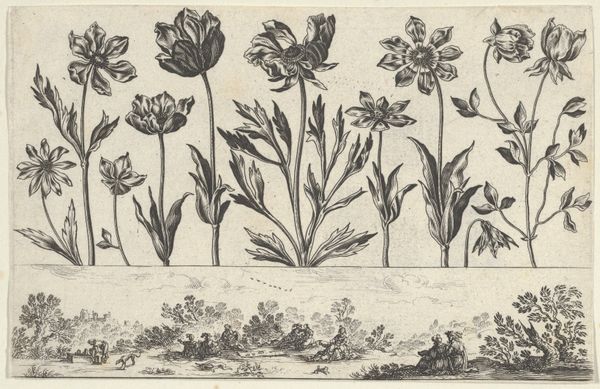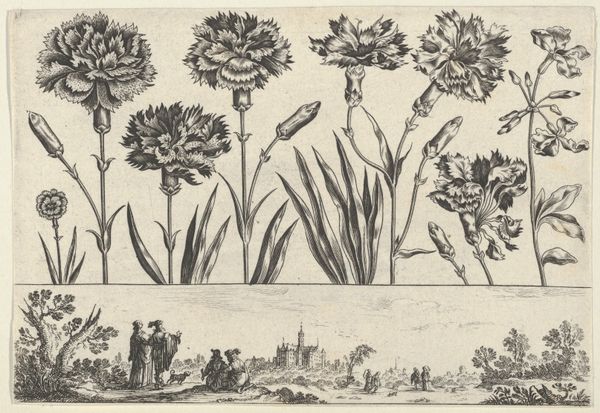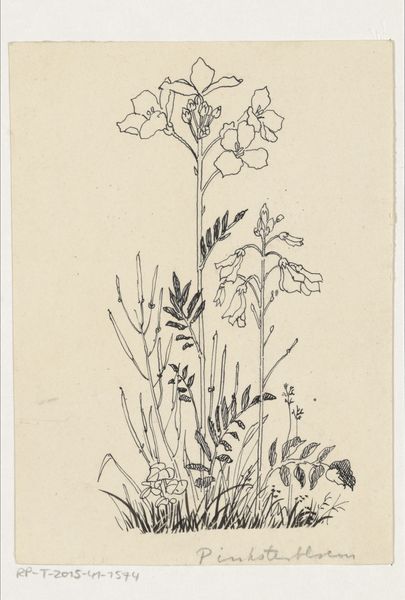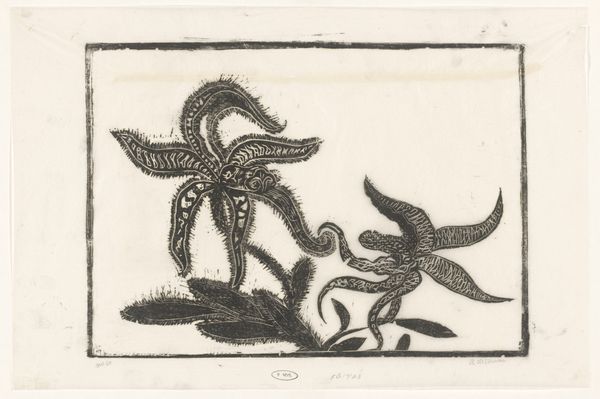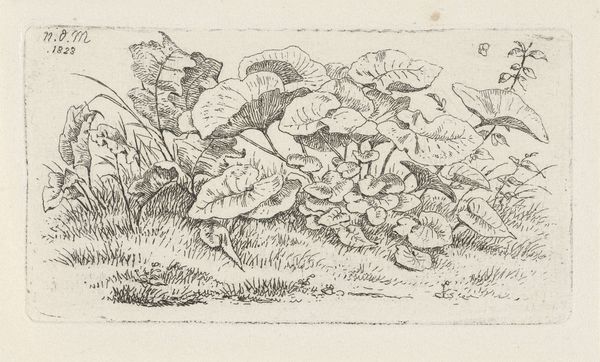
drawing, paper, ink, engraving
#
drawing
#
pen drawing
#
dutch-golden-age
#
paper
#
ink
#
line
#
engraving
Dimensions: height 104 mm, width 141 mm
Copyright: Rijks Museum: Open Domain
Dirck de Bray made this small print of a tulip, narcissus, and hyacinth sometime in the second half of the 17th century. Holland was in the grips of tulip mania, with single bulbs fetching the price of houses. What statements were the Dutch making by obsessively depicting these blooms? This image participates in the commercialization of nature, using visual codes to represent the financial and cultural value of the flowers. The print is a reminder of the ephemeral beauty of the natural world and its vulnerability to economic forces. As a plant study, its purpose could have been scientific, but by the mid-17th century, botanical illustration had become part of Dutch commercial culture. Prints like this were collected in albums, demonstrating the owner's knowledge of the natural world and their ability to acquire luxury goods. The social history of art gives us the tools to see the economic subtext in such a seemingly innocuous image. With further research into the archives of Dutch trade, we can understand the politics of imagery in this period.
Comments
No comments
Be the first to comment and join the conversation on the ultimate creative platform.
